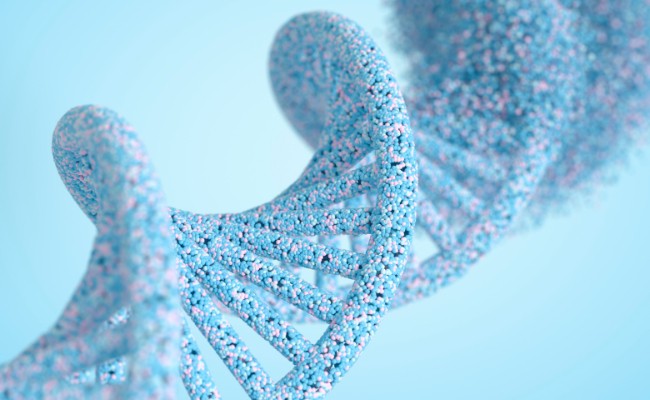How to Treat Homocystinuria?
- December 27, 2023
- No Comments

What is Homocystinuria?
Homocystinuria is a rare genetic disorder impacting the body's ability to metabolize amino acids, specifically methionine, a vital building block for proteins. This deficiency results in the accumulation of homocysteine, a byproduct of methionine metabolism, with elevated levels posing serious health risks, including cardiovascular issues, skeletal abnormalities, and complications in various organs. The disorder stems from the body's inability to process methionine correctly, leading to an unchecked rise in homocysteine levels in both blood and urine.
Amino acids, essential for protein synthesis, undergo a complex metabolic process involving the conversion of methionine into homocysteine. However, in individuals with homocystinuria, a deficiency in a key enzyme crucial for homocysteine metabolism disrupts this balance. This enzyme's absence hinders the body's ability to regulate homocysteine within a normal range, underscoring the need for effective management strategies to mitigate the associated health complications affecting multiple organ systems.
Why is Homocystinuria a Concern?
Homocystinuria poses a significant concern due to its potential impact on various aspects of health. Elevated homocysteine levels can lead to a range of complications, including cardiovascular issues such as blood clots, strokes, and heart attacks. Additionally, it can affect the connective tissues, leading to skeletal abnormalities and eye problems. If left untreated, homocystinuria can result in severe and irreversible damage to multiple organ systems.
How is Homocystinuria Diagnosed?
Diagnosing homocystinuria typically involves a combination of clinical evaluation, biochemical testing, and genetic testing. Clinical evaluation may include assessing symptoms and signs such as intellectual disability, developmental delays, eye problems, and skeletal abnormalities. Biochemical testing involves measuring the levels of homocysteine and methionine in the blood and urine. Genetic testing is crucial for confirming the diagnosis, as homocystinuria is a genetic disorder caused by mutations in specific genes responsible for the metabolism of methionine.
Treatment Solutions for Homocystinuria
- Dietary Management: One of the primary treatment approaches for homocystinuria involves strict dietary management to control the intake of methionine. Individuals with homocystinuria are often placed on a low-methionine diet, which restricts the consumption of foods high in methionine, such as certain meats, dairy products, and some grains. This dietary modification aims to reduce the production of homocysteine and manage its levels in the body.
- Supplementation with Vitamin B6: Vitamin B6, also known as pyridoxine, plays a crucial role in the metabolism of homocysteine. Some individuals with homocystinuria may benefit from vitamin B6 supplementation, as it can help convert homocysteine into a less harmful substance. However, the response to vitamin B6 supplementation varies among individuals, and its effectiveness is contingent on the specific genetic mutations causing homocystinuria.
- Betaine Supplementation: Betaine is a naturally occurring compound that can assist in reducing homocysteine levels. Betaine supplementation may be recommended as part of the treatment plan for some individuals with homocystinuria. By promoting the conversion of homocysteine to methionine, betaine can help mitigate the adverse effects associated with elevated homocysteine levels.
- Cysteine Supplementation: In some cases, cysteine supplementation may be considered as a treatment option. Cysteine is another amino acid, and providing it in supplemental form can help compensate for the impaired ability of the body to produce cysteine from homocysteine. This approach aims to address the deficiency of cysteine in individuals with homocystinuria.
- Medical Monitoring and Management: Regular medical monitoring is essential for individuals with homocystinuria to assess the effectiveness of the treatment plan and detect any potential complications early on. Monitoring may include periodic blood tests to measure homocysteine and methionine levels, as well as assessing the overall health and development of the individual.
Benefits of Timely and Adequate Treatment
- Prevention of Cardiovascular Complications: By effectively managing homocystinuria through dietary modifications and supplementation, the risk of cardiovascular complications, such as blood clots and heart disease, can be significantly reduced. Timely intervention can contribute to better cardiovascular health and overall well-being.
- Optimal Skeletal Development: Proper treatment helps in optimizing skeletal development, preventing or minimizing the occurrence of skeletal abnormalities associated with homocystinuria. This is particularly important for children with the condition, as it can positively impact their growth and quality of life.
- Preservation of Vision: Homocystinuria is often linked to eye problems, including dislocated lenses. Adequate treatment can help preserve vision and prevent or delay the onset of eye-related complications, contributing to a better quality of life for affected individuals.
- Enhanced Cognitive Function: Early and consistent treatment of homocystinuria can contribute to improved cognitive function and developmental outcomes. Managing the levels of homocysteine in the body is crucial for preventing intellectual disability and developmental delays associated with the disorder.
Comments (0)